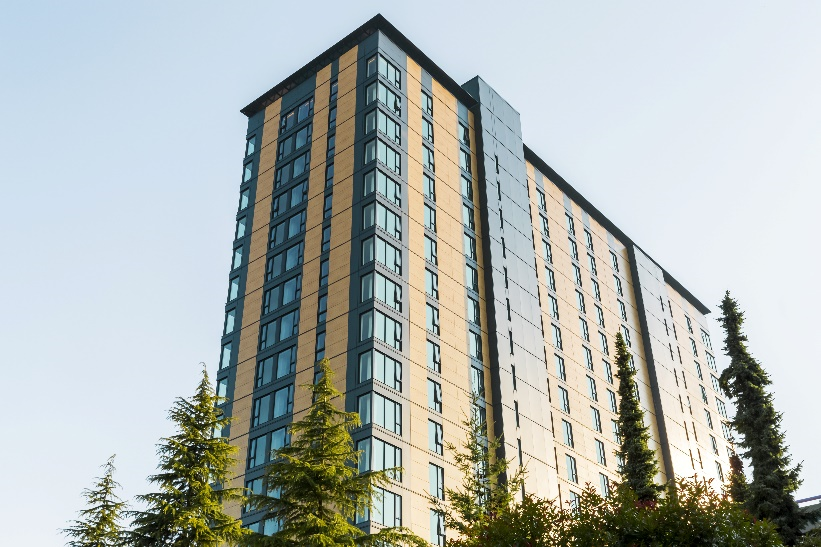Target
By 2030, establish an embodied carbon baseline and align new building and renewal designs with a 50% reduction target.
Rationale
As UBC continues to drive down operational emissions from buildings, it is becoming more important take a life cycle approach and address embodied emissions that arise from materials used to construct these buildings, in addition to the energy emissions from operating the building. Even when averaged over the life of the building, these emissions represent a significant share of all UBC’s extended impact emissions, hence limiting new construction as far as possible represents the first step in limiting GHG emissions. The embodied energy of new buildings can be reduced by using materials which use less energy to produce and are made from natural materials and recycled materials.
There has been significant progress made in initial research and scoping of this area; UBC is already a recognized innovator and leader in building projects that use low carbon materials and innovative construction techniques, as demonstrated by UBC’s Brock Commons Tallwood Project, which was world's tallest contemporary wood building at the time of completion. Research will need to continue into developing more accurate and streamlined assessment methods for embodied carbon, reliable regional supply chains for low carbon materials, as well as design and construction strategies to further reduce embodied carbon across the campus.
Featured Project
UBC’s Brock Commons Tallwood House takes advantage of new engineered wood products and construction techniques to showcase more sustainable building practices.
